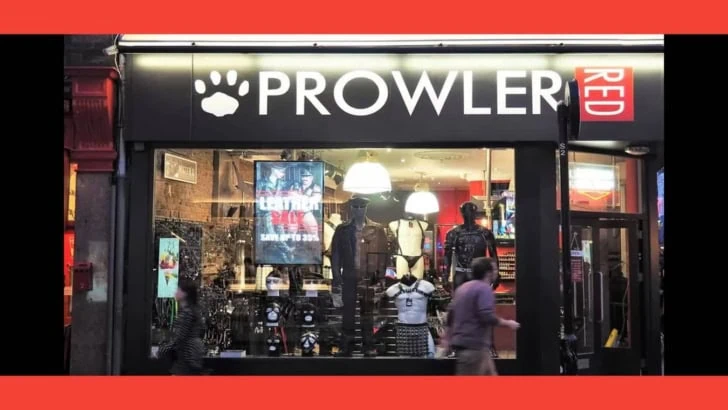Despite earlier suggesting that they planned to cut the national HIV prevention programme, it now seems the Government have had a change of heart and the same level of funding will continue next year. QX speaks to Yusef Azad, Director of Policy and Campaigns at the National AIDS Trust, to try and find out more about the issue…
By Patrick Cash
Are you pleased the national HIV prevention programme has been saved?
Yes, if it is confirmed that funding will continue at the current rate that is good news. The national programme, known as HIV Prevention England, and managed by Terrence Higgins Trust, costs £2.45 million a year and there had been talk of a 50% cut of £1.25 million. MPs, peers and most importantly many hundreds of individuals through NAT’s campaign lobbied the Government to keep funding HIV prevention – and we were successful!
That £1.25 million ‘saving’ would not genuinely have saved the Treasury money – we would have paid the costs in additional treatment and care for transmissions which would otherwise have been prevented. It has recently been estimated that one HIV transmission results in lifetime treatment costs of £360,777.
What was HIV prevention funding being spent on?
The national HIV prevention programme is spent on the prevention needs of gay and bisexual men and black African communities, since these are the two groups most seriously affected by HIV, accounting last year for 75% of new HIV diagnoses.
The national programme includes research into the prevention needs of gay men and Africans, funding of specific prevention projects at a local level, including one-to-one and group work, and HIV testing initiatives, development of visual media to promote safer sex, coordination of National HIV Testing Week, to give some examples.
It’s important to know that the main responsibility for funding HIV prevention lies with local councils. The national programme is not meant to substitute for council-funded activity but support it, doing things at a national level which are best and most cost-effectively done ‘at scale’. We’d encourage QX readers to ask their local councils what they are doing to stop the spread of HIV amongst gay men. Are councils doing enough to have any impact?
Was HIV prevention funding working as HIV rates have progressively been going up? If a department is not delivering effective results, should the money not be re-channeled into other avenues?
HIV rates have not been progressively going up – Public Health England estimate that over the last ten years transmission rates have remained more or less unchanged – but they are far too high and we need to reduce them (2,800 gay and bisexual men are estimated to have acquired HIV in 2013). It is hard to assess what impact prevention activity has had because we can’t see what would have happened had the relevant work not taken place. We could well be in an even worse position than we are now.
“Above all reducing HIV rates has to become again the business of all us in the gay community, not just the health promotion charities.”
Recent modeling of the epidemic has shown HIV rates would be many, many times higher if gay men were not using condoms at all, so the condom promotion being done may still be having an important impact in containing the epidemic. There has also been a significant decrease in late HIV diagnoses amongst gay men, which helps reduce transmission and which has coincided with a real emphasis on HIV testing in prevention work.
NAT are not arguing that all HIV prevention work should simply continue ‘business as usual’ – we are sure there is significant room for improvement. We can’t rest content with HIV transmission rates not going up – we must work for them to come down.
We are calling for the level of funding to be increased (it’s a fraction of what it was a decade ago), and for a new multi-year national HIV prevention programme to start in 2016. The contracting decision must look very hard and critically at the various bids to deliver the programme, ensuring they are innovative, evidence-based, and value for money – with the best possible provider(s) chosen. Any new programme should be managed and evaluated independently from those providing the services.
Let’s cut through all the bureaucracy and red tape: on a street level, how do we prevent HIV spreading amongst gay men? How can money be spent most effectively to achieve this end?
We need to link up HIV prevention with support for the mental health, drugs and alcohol needs of gay men – condom use is less likely if you are depressed or off your face; we need to do even more to increase HIV testing rates in the gay community; PrEP must be made available to those most at risk of HIV; we need to be more aware of how the number of our sex partners affects our risk of HIV; sex and relationships education should be compulsory in every school, inclusive of LGBT relationships, and properly informative about safer sex and HIV. And we need to keep on promoting condoms, which protect not just against HIV but also other STIs, some of which are very serious.
We also need to be aware of how many gay men getting diagnosed with HIV in the UK are not from the UK (40% in 2013). HIV prevention in the UK, and in London especially, has to think ‘internationally’ – the funds need to be there to reach out with health promoters from the relevant communities, with materials in the right languages.
Above all reducing HIV rates has to become again the business of all us in the gay community, not just the health promotion charities that do such good work. Gay media, gay businesses, clubs and bars, the companies which run gay dating apps, all have to take this seriously and work out what they can and should do.
I’ve got the sense that there is also an increasing appetite for mobilisation at a community level – initiatives such as Reshape and ActUp are very exciting! For example, it is as a community that we have to start challenging the HIV stigma amongst gay men which hampers our prevention efforts.
The threatened cut to HIV prevention was a wake-up call for us to re-state how important HIV prevention is, to agree on a shared vision of what needs to be done, to argue fiercely for the funds needed to promote our sexual health, and for each of us to play our part in ensuring that ourselves, our lovers, our friends and our community are safer and healthier.
• Find out more about current HIV prevention work at: www.hivpreventionengland.org.uk
• Sign the community petition for access to PrEP now at: www.prepaccess.org.uk
• National AIDS Trust: www.nat.org.uk


















